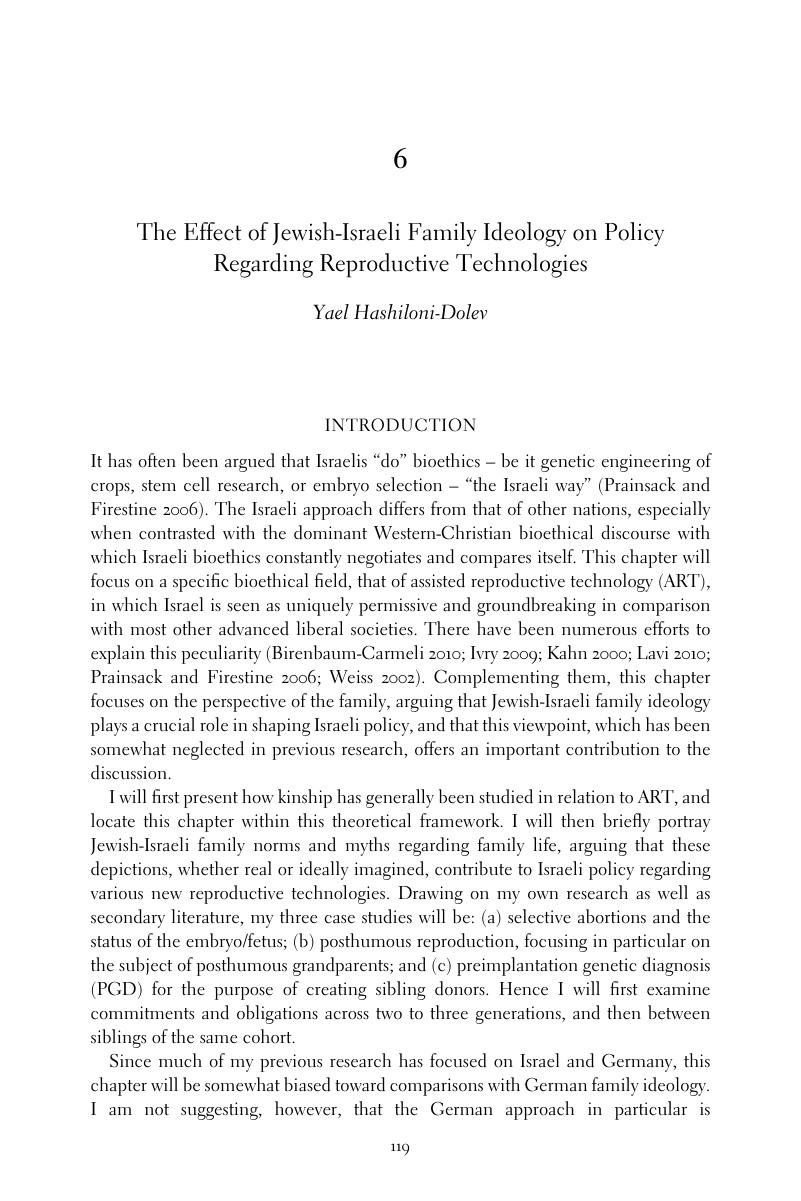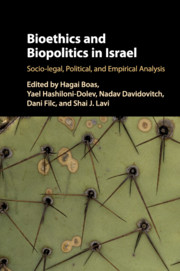Book contents
- Bioethics and Biopolitics in Israel
- Bioethics and Biopolitics in Israel
- Copyright page
- Contents
- Contributors
- Introduction: Bioethics in Israel
- Part I Bioethics as Biopolitics
- Part II Familialism and Reproduction
- 6 The Effect of Jewish-Israeli Family Ideology on Policy Regarding Reproductive Technologies
- 7 “Quiet, Dependent, Nice, and Loyal”: Surrogacy Agencies’ Discourse of International Surrogacy
- 8 Palestinian Fertility in the Israeli Sphere: Palestinian Women in Israel Undergoing IVF Treatments
- 9 Childbirth in Israel: Home Birth and Newborn Screening
- 10 “Life after Death”: The Israeli Approach to Posthumous Reproduction
- Part III Is There an Israeli Exceptionalism?
- Index
- References
6 - The Effect of Jewish-Israeli Family Ideology on Policy Regarding Reproductive Technologies
from Part II - Familialism and Reproduction
Published online by Cambridge University Press: 21 December 2017
- Bioethics and Biopolitics in Israel
- Bioethics and Biopolitics in Israel
- Copyright page
- Contents
- Contributors
- Introduction: Bioethics in Israel
- Part I Bioethics as Biopolitics
- Part II Familialism and Reproduction
- 6 The Effect of Jewish-Israeli Family Ideology on Policy Regarding Reproductive Technologies
- 7 “Quiet, Dependent, Nice, and Loyal”: Surrogacy Agencies’ Discourse of International Surrogacy
- 8 Palestinian Fertility in the Israeli Sphere: Palestinian Women in Israel Undergoing IVF Treatments
- 9 Childbirth in Israel: Home Birth and Newborn Screening
- 10 “Life after Death”: The Israeli Approach to Posthumous Reproduction
- Part III Is There an Israeli Exceptionalism?
- Index
- References
Summary

- Type
- Chapter
- Information
- Bioethics and Biopolitics in IsraelSocio-legal, Political, and Empirical Analysis, pp. 119 - 138Publisher: Cambridge University PressPrint publication year: 2018
References
- 11
- Cited by



